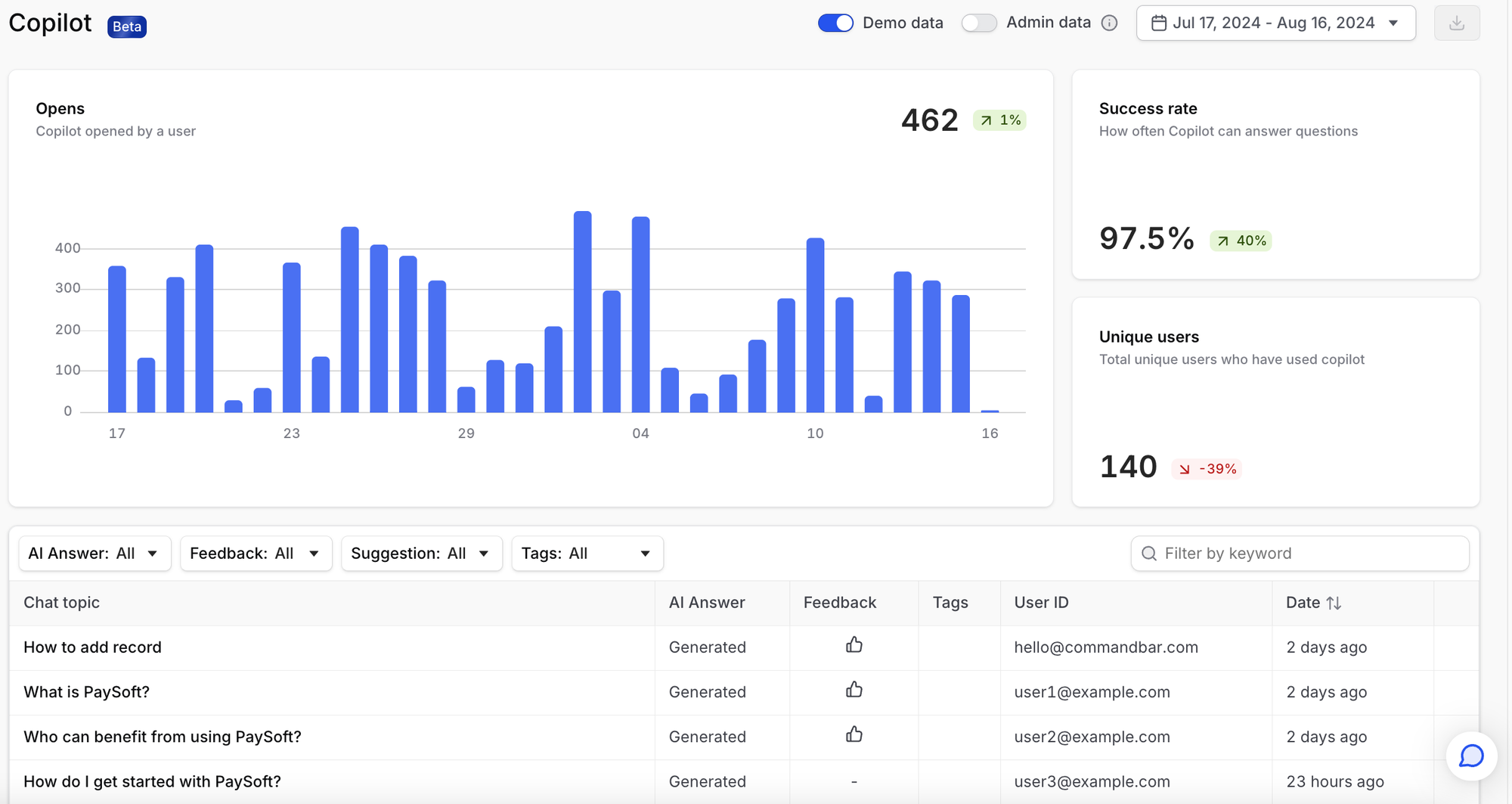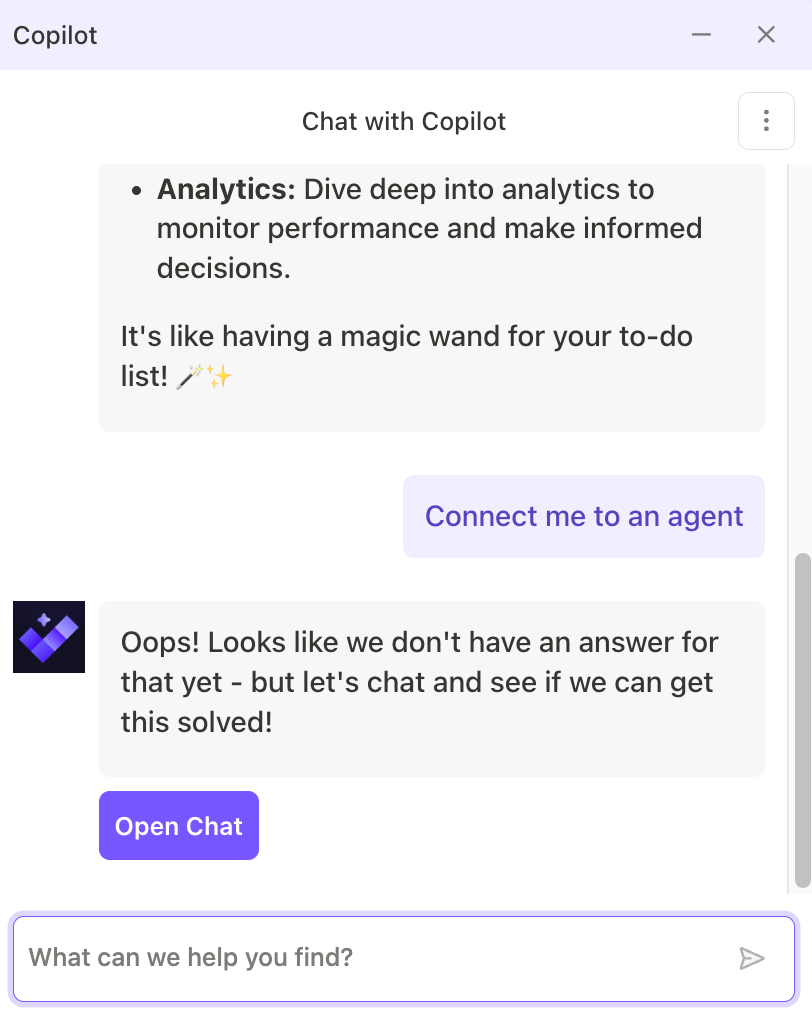I am guilty.
In the past, I’ve treated customer behavior data as the holy grail for determining user intent.
Heatmaps, conversion funnels, and product usage data are the catnip of the SaaS world, providing a comforting sense of insight and clarity. I've certainly found myself digging through them and feeling like I was truly discovering my users’ core motivations and intent. Look, I can watch them move about the screen!
However, one of the biggest misunderstandings I, and other SaaS product folks, have made is equating customer feedback and behavior data with true customer intent.
But they're not the same, not at all.
You can have all the feedback and behavioral, qualitative, and quantitative data in the world, and you can still only get a partial picture of true customer intent.
Don't get me wrong: you can definitely build segments and cohorts, analyze them, put together a picture of your customer journey, map it out, and understand (generally) how someone might flow through your product, what pain points they might hit, where they might convert or have an aha moment, and more.
However, understanding true customer intent — the real motivations behind your users' behaviors, the questions they ask, the tickets they submit, the problems they run into, and how they might respond to solutions — requires another level of knowledge of the user.
Having this knowledge is super important because it leads to better insight, not only into your customer but also into your product, and allows you to make better and better product decisions. All of this bleeds back into a better user experience, increased satisfaction, retention, and more.
Many people go about gathering this knowledge by trying to collect as much feedback and background behavior data as possible.
But one way that we've seen our users leverage new generative AI models gather real customer intent is through their AI powered user assistant chatbots.
Many people think chatbots’ core utility job is deflecting tickets to save time and money. But user assistants like Copilot help you get much better at gathering, assembling, collating, and analyzing your customer intent data, leading to more informed product improvements and better growth and retention.
What is Customer Intent?
First, let's briefly review customer intent.
Customer intent defines what your user's motivation behind a specific action is.
What is their intent and their reason for taking that specific action?
Different Forms of Customer Intent
There can be some differences in exactly how that customer intent is formed. For example, it might be an explicit desire to execute a specific task. The user may want to add a new project to their to-do list, and they have a specific flow to follow to do this.
It could also be more subdued, where your user is trying to learn something new or try out a new feature and is just in exploration mode. There's only sometimes a clear, single-lane customer intent, but there is always motivation behind any human action.
Categories of Customer Intent
Folks often categorize customer intent into four main categories: transactional, informational, navigational, and commercial.

As an SEO guy, I'm very familiar with these because we break down the intent behind a Google search into these four categories, and it helps you put into context what kind of content Google will show and might want to show in those results. For example, there's a big difference between searching for the “best men's running shoe size 10” and asking, “How is the running shoe made?”
That's because, in one, the user is clearly looking for a shopping experience; in the other, they're looking for information. Though the queries are related, they are not the same. The answers, the type of content, the approach, the experience you'll design, and the visuals you'll build will be very different. Addressing each type of intent the correct way is super important.
According to Google’s assumed user intent, they load up the shopping tab when a shopping-related query is made. When you search for something timely, they'll show you news articles. When you want information, it's often an AI answer or Wikipedia at the top.
Importance of Understanding Customer Intent
Understanding and accurately identifying the true customer intent is super important for creating personalized experiences in your SaaS product. It allows you to better understand your users, meet their needs, and gather better qualitative and quantitative feedback to add to your overall understanding of the user. All of that creates a better customer experience, better retention, and better upsell.
But it's not always as easy as it is for Google, with decades of data!
Traditional Methods of User Data Collection
Traditional methods of user data collection only go so far toward actually painting a picture of intent.
The existing landscape consists of behavioral data, such as session recordings, heat maps, and funnels/flows, or qualitative data, such as written feedback, survey responses, and more. You can also add to that the data you're gathering from your specific users' interactions with your product, and when you combine that all together, you can map out the overall customer journey.
You can map out the journey within a specific flow.
You can map out how users move about the product.
You can map out different conversion funnels.
I'm not saying that there isn't a lot of data or a use case. In fact, maybe there's too much of it.
But my point is that if you want to understand customer intent, you need to get to another level of refinement.
The issue with these traditional methods of user data collection is that they only offer a partial picture of your customer's actual intent.
What you're seeing in this traditional data is behavior.
What did they click, what did they do, and how did they respond to a survey?
While you might be able to explicitly ask for feedback some of the time, for 99% of interactions or data points, you're only getting an educated look into what users might have as their intent.
It is easy to get lost in this sea of data — that's why identifying real intent clearly is so critical.
The Power of Chatbots
New AI-powered user assistants are so powerful because you get inputs in text, which you can analyze at scale and measure for response efficacy.
Chatbots have been around for about a decade, and they've gotten smarter over time.
For years, it has been possible to go ahead and say, “hey, we're getting a lot of questions about X, or a lot of folks are hitting the chatbot, and they're not getting a good answer, and they're deflecting,” or “they're not getting deflected, and they're going to a support agent.”
What is new is the ability of an AI-powered chatbot like our Copilot to continuously interact with users, test out different answers, get all that feedback data in one place, and structure it in a way that relates to the product.

For some queries, Copilot won’t have a good answer. Either because it simply doesn’t know (Copilot has a tunable confidence threshold — we don’t want it confidently answering things it doesn’t have training material to know about!) or because the user found the answer unsatisfactory.
In the moment, Copilot will likely hand the user off to a human agent to help them. Better we also log these occurrences and label them as “deadends”, and they’re all viewable in this handy table.

Then, you can go through your deadends and see how to fix them, maybe by editing an article in your knowledge base, creating a product tour that explains the feature the user is asking about, or making a change to your underlying product. Then you can see if the change reduces the frequency of the deadend.
Think of it as a 3 step process:
- Capture user intent (the user’s queries)
- Sort them into “satisfied” and “unsatisfied” intent (deadends are “unsatisfied”)
- Make changes (in Command AI or in your product) and see what it does to the deadend rate
Proactive Customer Support Using Chatbot Data
Copilot is trending towards being a proactive resource that can understand customer intent from the train of thought. Before a customer even asks for an explanation or a product tour, it can prompt it itself. This is really next-level stuff that provides solutions to users before they even need them.
Enhancing Product Development with Customer Intent Insights
It can be a challenge to incorporate user intent insights from Copilot into your product decision-making at first.
Analyzing Data for Product Improvement
All this data is great, but there's also a reality that we have so much data now that it can be hard to accurately bring it into the product development loop. Considering your Copilot as a foundational resource for informing your product development cycle is important. You should continuously analyze all the data and queries through Copilot and create reports to understand where folks are experiencing friction and where you can fix bugs or expand features.
Incorporating Feedback into Development Cycles
That requires a mindset change from your team. If it's not something you've used in the past, incorporating that into your flow can be a bit of a challenge. Who's going to be responsible for it? How much weight do we put on it?
I would propose a lot!
Think about what you're getting: natural language input from your users, rich in-the-moment intent data explicitly outlining what they're trying to do. While it might not be the only thing you look at, I would certainly put it near the top. You can drive better products through this insight into customer intent.
We've had customers who have seen great increases in engagement with their nudges and surveys. We've seen reduced onboarding times and onboarding falloff, as well as so many other important improvements.
Reducing Churn with Intent Data
With this better custom intent data, you now have a more complete picture of not only your users' motivations and desires but also the specific frictions they run into when facing a problem. They need to understand how you can best solve that issue.
One interesting way to leverage these chatbots to produce better customer intent data and identify those at risk of churn is to create a systematic way of reviewing that ends fall-offs and user frustration. When you combine your traditional surveying and polling with this more nuanced user intent data and natural language, you can identify frustration and get in front of it earlier and faster, ideally even proactively, reducing the likelihood of folks churning.
Supporting Customer Support Teams
Your Copilot isn't always a full replacement for your customer support team. It's still important to have highly knowledgeable human agents. When you add all of this intent data to all of their existing knowledge of your product, it becomes a superpower. You can help them reduce time spent on repetitive and unimportant tickets and get them working on those edge cases that require more time, more energy, and ultimately are more rewarding to solve.

Copilot can also be a great training source for your customer support teams. Suppose you share the trends and the behavior that the chatbot is experiencing. In that case, you can train the customer support team, help them understand where users are coming from, and better train your Copilot with your customer support team's input, creating a powerful feedback loop.
Building a Better Product
I think that Copilot's ability to bring all of these things together and get more customer intent data, which helps you deflect tickets and build better products if you analyze it the right way, is powerful. It's been really exciting to see our users take to that and use it not just as a replacement for their agents or kind of an add-on for AI “cool,” but really as a foundational way to increase their understanding of the user, to build better personas, to create better help documentation, improve the user experience and the customer journey, and generally just create an environment in which you're arming yourself with the most accurate and insightful data as possible, leading to better product and more satisfied users.
Conclusion
Customer intent data is only as helpful as you make it. You can gather all the intent data in the world, but if you can't find a way to action it and actualize into better product experience, it's not worth that much.
It's important to not only have a clear way that you're going to collect intent data, but also to turn all of that data into actual product development, and then to measure the impact of those changes.

















